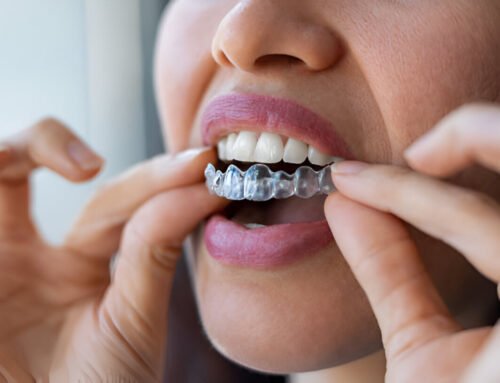Does Invisalign Hurt? All You Need To Know
Invisalign aligners are popular for straightening teeth without the hassle of metal braces. They are known for being more comfortable, but you might still wonder, “Does Invisalign hurt?” Let’s dive into the details and address this common concern.
What Is Invisalign?
Invisalign uses clear, plastic aligners to move your teeth gradually. These aligners are custom-made to fit your mouth. Unlike metal braces, they are nearly invisible and can be removed when eating or brushing your teeth.
Why Might Invisalign Hurt?
Initial Adjustment
When you first start wearing Invisalign, you may experience some discomfort. This is because the aligners put pressure on your teeth to move them into the correct position. This pressure can cause your teeth to feel tender or sensitive, especially during the first few days of wearing a new set of aligners.
Pressure and Movement
The primary reason for the discomfort is the pressure applied to your teeth. This pressure is necessary to shift your teeth into alignment. Think of it as a sign that the aligners are doing their job.
Gums and Cheeks
Sometimes, the edges of the aligners might rub against your gums, cheeks, or lips. This can cause minor irritation until your mouth adjusts to the new aligners.
Do You Have to Pay for Emergency Dentist Services in the UK?
How Long Does the Pain Last?
Most people find that the discomfort from Invisalign is temporary. It usually lasts for a few days after putting in a new set of aligners. For some, this period might extend to a week. However, as your mouth gets used to the aligners, the pain should decrease.
How Does Invisalign Pain Compare to Braces?
Invisalign is generally less painful than traditional metal braces. Metal braces can cause more discomfort because of the brackets and wires. These components can poke and irritate your mouth, while Invisalign’s smooth plastic is gentler.
Managing Invisalign Discomfort
Wear Your Aligners as Directed
Consistency is key. Wearing your aligners for the recommended 20 to 22 hours a day helps your mouth adjust more quickly and can reduce discomfort.
Start New Aligners Before Bed
Put in new aligners at night so you can sleep through the initial hours of discomfort. This allows your mouth to adjust while you rest.
Use Dental Wax
If the edges of your aligners are irritating your gums or cheeks, use dental wax. Apply a small amount to the rough edges to reduce friction.
Stick to Soft Foods
When your teeth are sore, avoid hard or crunchy foods. Opt for soft foods like soups, mashed potatoes, and smoothies during the initial days of wearing new aligners.
Over-the-Counter Pain Relief
If the pain is more severe, consider taking over-the-counter pain relief such as ibuprofen or paracetamol. Always consult with your healthcare provider before taking any medication.
Cold Compress and Cold Water
Applying a cold compress to your cheeks can help reduce pain and inflammation. Drinking cold water or sucking on ice cubes can also soothe your mouth.
Chewing Exercises
Using products like Chewies can help your aligners fit better and can also relieve some discomfort. Chewing on these helps to seat the aligners properly on your teeth.
When to See Your Orthodontist
If your discomfort is severe or doesn’t go away after a week, contact your orthodontist. They can check if your aligners fit correctly and make any necessary adjustments.
Key Takeaway: Is Invisalign Worth It?
The benefits of Invisalign far outweigh the temporary discomfort. Here are some advantages:
- Shorter Treatment Time: Invisalign often works faster than braces.
- Aesthetic Appeal: Clear aligners are less noticeable than metal braces.
- Convenience: You can remove them to eat, drink, brush, and floss.
- Oral Hygiene: Easier to maintain good oral hygiene without brackets and wires in the way.
Conclusion
Invisalign may cause some temporary tenderness or discomfort, especially when starting a new set of aligners. However, this pain is generally mild and short-lived. By following simple tips to manage discomfort, you can make your Invisalign experience more comfortable. Remember, any orthodontic treatment comes with some level of pain, but the results—a straighter, healthier smile—are well worth it.
Contact Broxburn Smile Centre
Ready to start your Invisalign journey or have more questions? Contact Broxburn Smile Centre today to schedule your consultation. Our experienced orthodontists and Dentist in Broxburn are here to help you achieve the smile you’ve always wanted with the utmost comfort and care. Call us now or visit our website to learn more!









